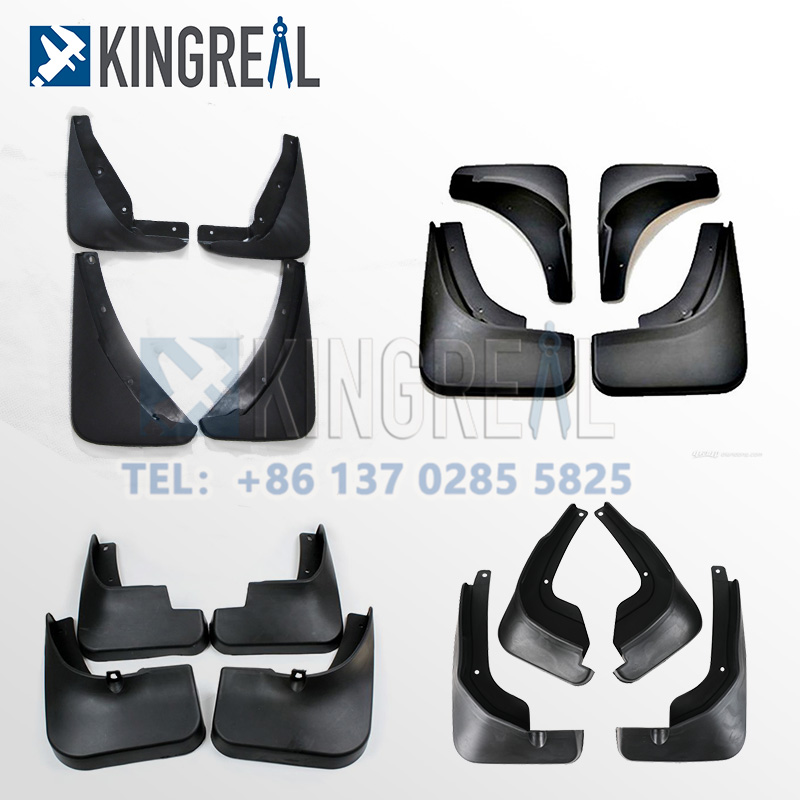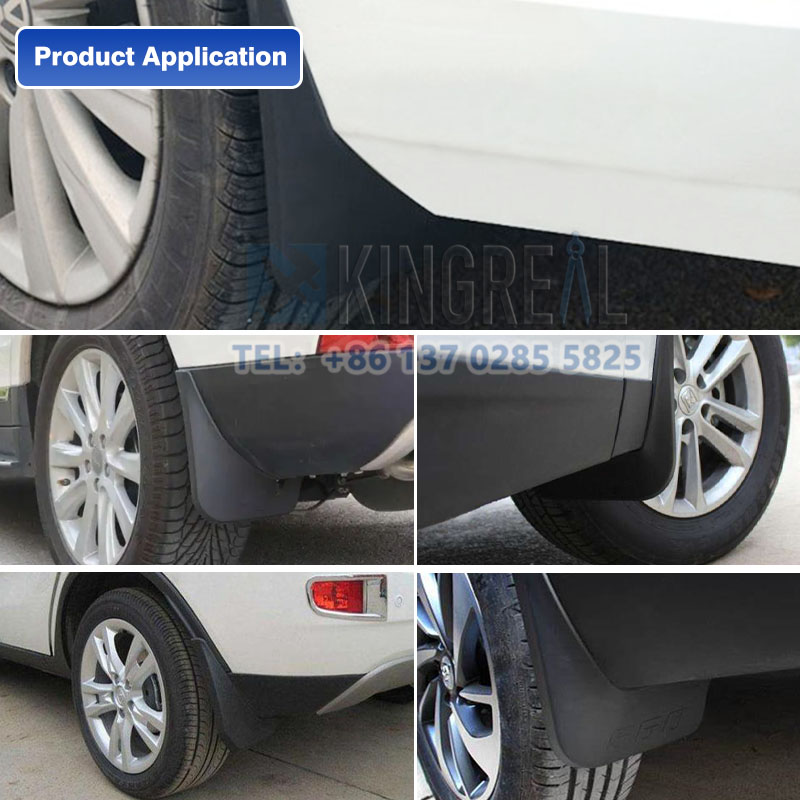
KINGREAL UNIVERSAL IND., LTD
Phone
+86-13702855825Among the many defects of car fender injection molded products, weld lines are the most common. Except for a few automotive fender press die parts with very simple geometric shapes, weld lines occur on most car fender injection molded parts (usually in the shape of a line or a V-shaped groove), especially large and complex products that require the use of multi-gate car wing stamping dies and inserts.
Weld lines not only affect the appearance quality of plastic parts, but also affect the mechanical properties of plastic parts, such as impact strength, tensile strength, elongation at break, etc., to varying degrees. In addition, weld lines also have a serious impact on product design and the life of plastic parts. Therefore, they should be avoided or improved as much as possible.
The problem of weld lines is inevitable in automotive fender press die. It not only damages the appearance quality of plastic parts, but also affects the mechanical properties of plastic parts, such as reducing impact strength, tensile strength and elongation at break. What's more, weld lines will seriously affect the design of products and the durability of plastic parts. Therefore, effective measures must be taken to minimize or improve this phenomenon.
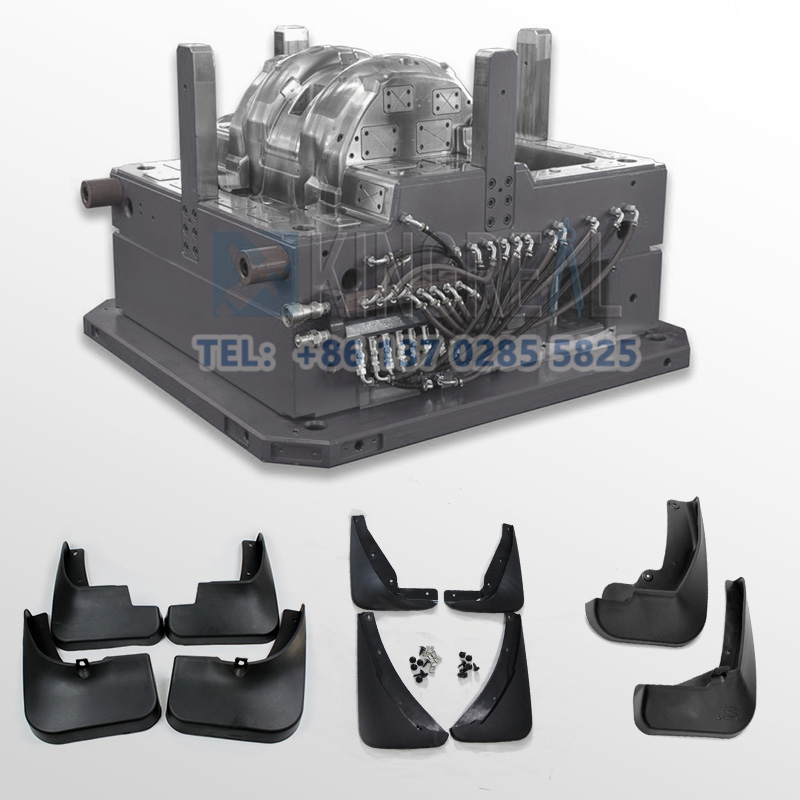
Causes and solutions of weld lines
| 1 | Temperature Problem |
| 2 | Car Wing Stamping Die Design Problem |
| 3 | Car Wing Stamping Die Venting Problem |
| 4 | Improper Use of Release Agent |
| 5 | Plastic Structure Design Problems |
| 6 | Other Potential Causes |
(1)Temperature Problem
The ability of low-temperature melt to flow and merge is weak, which easily leads to the formation of weld lines. When weld fine lines appear at the same position on the inner and outer surfaces of the plastic part, it is often due to poor welding caused by too low material temperature. To address this problem, the temperature of the barrel and nozzle can be appropriately increased, or the injection cycle can be extended to increase the material temperature. At the same time, it is necessary to control the flow of cooling water in the car wing stamping die and appropriately increase the temperature of the automotive fender press die.
In addition, local heating is also an effective solution. When the strength of the weld line of the plastic part is insufficient, the part where the weld line is generated in the car wing stamping die can be locally heated to increase the local temperature of the welded part of the car fender injection molded part, thereby enhancing the strength of the welded part of the plastic part.
If the low-temperature molding process must be used due to special circumstances, the ability of the melt to merge can be improved by increasing the injection speed and increasing the injection pressure. At the same time, adding a small amount of lubricant to the raw material formula can also improve the fluidity of the melt.
(2)Car Wing Stamping Die Design Problem
The casting system of the automotive fender press die has a significant impact on the flow and welding of the melt. Since poor welding often originates from the merging of molten materials, when designing the automotive fender press die, priority should be given to using gate types with less merging, and the gate position should be arranged reasonably to minimize the inconsistency of the filling rate and the interruption of the filling material flow. If conditions permit, it is recommended to use a one-point gate, because there is no multi-stream flow, and the molten materials only merge from a single direction, thereby reducing the probability of forming weld lines.
However, if there are too many or too small gates in the car wing stamping die casting system, inaccurate gate positioning, too far distance from the gate to the flow material fusion point, and too small cross-sections of the main runner and the branch runner lead to increased material flow resistance, etc., it may lead to poor welding, and then form obvious weld lines on the surface of the plastic part. In response to these problems, corresponding measures should be taken, such as reducing the number of gates, optimizing the gate position, increasing the gate cross-section, setting auxiliary runners and expanding the diameter of the main runner and the branch runner to improve the welding condition.
At the same time, in order to prevent the low-temperature molten material from generating weld lines when it is injected into the automotive fender press die cavity, a cold material hole can be set in the car wing stamping die on the basis of increasing the car wing stamping die temperature. In addition, when flash is generated at the weld line of the plastic part, it is usually not considered a fault because such flash will not cause shrinkage. Therefore, opening a shallow groove at the part where the flash is generated on the automotive fender press die, transferring the weld line to the additional flash winglet, and removing the winglet after car fender injection molding is also an effective way to eliminate the weld line fault.
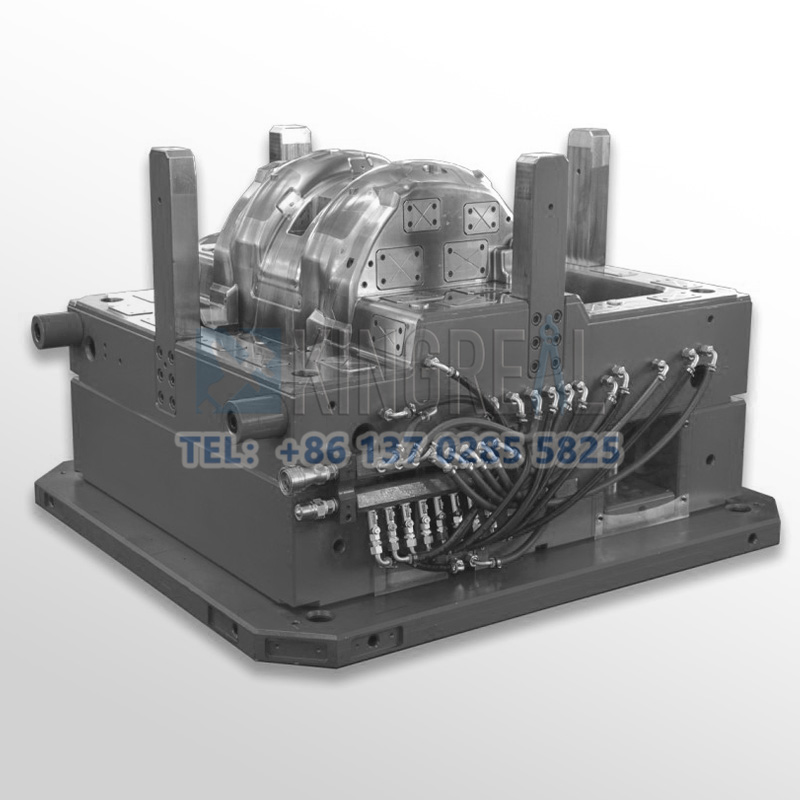
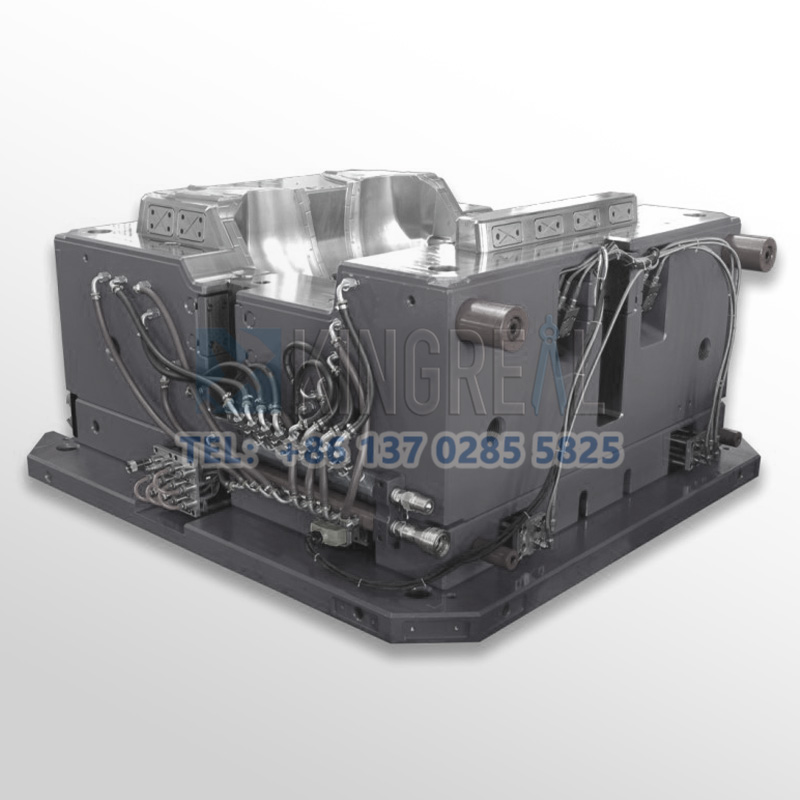
(3)Car Wing Stamping Die Venting Problem
When the molten material weld line coincides with the automotive fender press die parting line or caulking, the air squeezed out by multiple streams of material in the car wing stamping die cavity can be discharged through the car wing stamping die parting gap or caulking. However, if the weld line is misaligned with the parting line or caulking, and the vent is not properly set, the residual air in the automotive fender press die cavity cannot be discharged. These compressed air converts its molecular kinetic energy into heat energy under high pressure, causing the temperature of the molten material confluence point to rise. When this temperature reaches or exceeds the decomposition temperature of the raw material, yellow or black spots appear at the weld point.
Such spots usually appear repeatedly in the same position and always appear at the confluence point, so they should not be mistaken for impurity spots. The main reason for their occurrence is poor car wing stamping die venting, which causes the molten material to decompose at high temperature to form carbonization points.
To solve this problem, we should first check whether the vent hole is blocked by solidified materials or other objects. If the problem still occurs after removing foreign objects, we need to add vent holes at the confluence point, or increase the vent gap by adjusting the gate position, reducing the clamping force, etc., to promote the confluence of confluence. At the same time, process measures such as reducing material temperature and car wing stamping die temperature, shortening high-pressure injection time, and reducing injection pressure can also help improve the situation.
(4)Improper Use of Release Agent
Excessive use of release agent or inappropriate selection of varieties will cause weld lines on the surface of plastic parts. During the car fender injection molding process, usually only a small amount of release agent is evenly applied to parts such as threads that are difficult to demold, and the amount used should be reduced as much as possible.
When selecting a release agent, it is necessary to comprehensively consider factors such as car fender injection molding conditions, plastic part shape, and raw material types. For example, pure zinc stearate is suitable for most plastics except polyamide and transparent plastics, and can also be used for polyamide and transparent plastics after mixing with oil. Silicone oil toluene solution is suitable for various plastics, and can be used for a long time after being applied once, but it needs to be heated and dried, and its use is slightly complicated.
(5)Plastic Structure Design Problems
If the wall thickness of the plastic part is designed to be too thin, the thickness difference is too large, or there are too many inserts, it will cause poor welding. When thin-walled parts are molded, defects often occur due to the rapid solidification of the molten material, and the molten material often converges at the thin wall to form a weld line, which in turn affects the strength of the plastic part.
To prevent such problems, it is necessary to ensure that the wall thickness of the thinnest part of the plastic part is not less than the minimum allowable wall thickness during car fender injection molding, and minimize the use of inserts to keep the wall thickness uniform.
(6)Other Potential Causes
The moisture or volatile content in the raw materials is too high, the car wing stamping die oil stains are not thoroughly cleaned, there is cold material in the automotive fender press die cavity or the fiber filler is unevenly distributed, the automotive fender press die cooling system is improperly designed, the molten material solidifies too fast, the insert temperature is too low, the nozzle aperture is too small, the plasticizing capacity of the car fender injection molding machine is insufficient, or the barrel pressure loss is too large, etc., may all lead to poor welding.
In view of these potential causes, corresponding measures should be taken, such as pre-drying raw materials, cleaning car wing stamping dies regularly, adjusting automotive fender press die cooling water channels, controlling cooling water flow, increasing insert temperature, replacing large-aperture nozzles or using larger car fender injection molding machines, etc., to solve the weld line problem.
In summary, by paying attention to details in plastic structure design, raw material pretreatment and car fender injection molding machine operation, we can effectively avoid the generation of weld lines and improve product quality.
